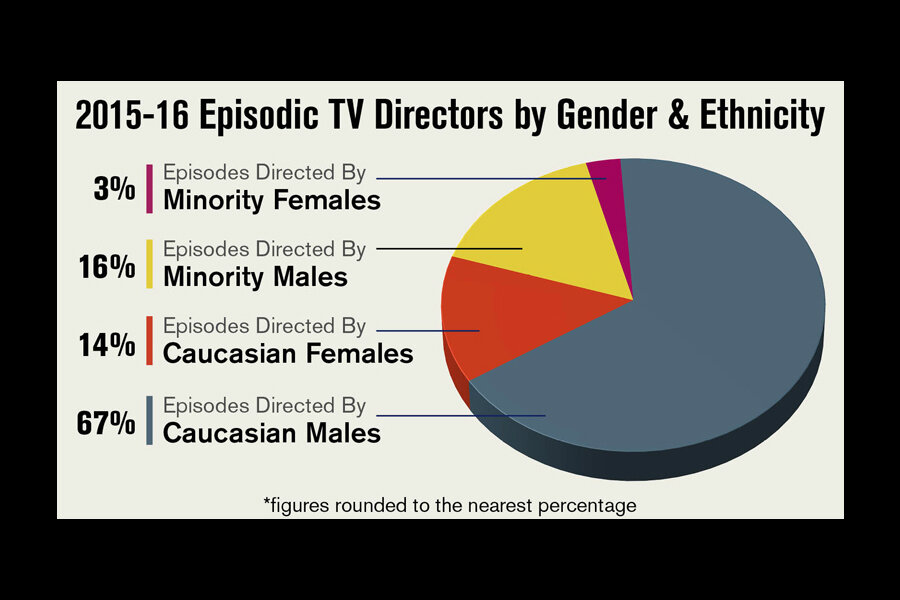Report finds little change in TV's diversity behind the camera this year
Loading...
It’s been a year since Matt Damon’s hotly debated assertion that diversity matters more in front of a camera than behind it. Mr. Damon apologized for the gaffe, and many responded with calls for greater diversity in Hollywood's hiring practices. But little has changed.
White men, who now comprise less than a third of the US population, directed more than two-thirds of the TV episodes produced during the 2015-2016 network season, according to an annual Directors Guild of America report released Monday.
The report, which analyzed more than 4,000 episodes from 299 scripted series, demonstrates very slight gains in the percentage of women and ethnic minorities working as TV directors. But it also highlights what some allege is the industry’s stagnant response to the longstanding problem of underrepresentation.
Nonwhite men directed 16 percent of the episodes in the sample, an increase of just 1 percentage point over last year’s report. Similarly, white women gained 1 point, to direct 14 percent of the episodes.
Women of color, meanwhile, served as an episode’s director just 3 percent of the time, for the second year in a row.
"These numbers shine a light on the lack of real progress by employers in this industry, plain and simple," Paris Barclay, the guild’s president, said in a statement. "Of particular concern is the precedent being set by the fastest-growing category, streaming video."
While the number of episodes from Netflix, Amazon, Hulu, and other streaming services more than doubled last year, only 8 percent were directed by minorities, the study found. Seventeen percent were directed by women.
“There’s a long road ahead for true change to be realized – because for that to happen, the pipeline will need to change at the point of entry,” Mr. Barclay added, noting that employers need to focus on interviewing more diverse candidates and hiring experienced directors “instead of handing these jobs out as perks.”
A separate report released by San Diego State University’s Center for the Study of Women in Television and Film this month similarly acknowledged stagnation in the share of behind-the-camera TV jobs going to women – and in front of the camera, too.
Dr. Martha Lauzen, who founded the center and has been studying women in media for two decades, tells The Christian Science Monitor there’s no simple reason that explains why women continue to be underrepresented and underemployed in this field, but unintentional human nature seems to play a role.
“People tend to prefer to work with others who look like themselves. And that’s not an excuse. But I think it is an explanation for how hiring decisions happen,” Dr. Lauzen says. “There is a subconscious bias that takes place in the hiring practice that ends up suppressing the numbers of women working in key behind-the-scenes roles, which in turn suppresses the number of female characters we see on screen.”
Lauzen’s research found that shows with at least one woman creator or executive producer featured significantly higher percentages of female characters, major female characters, and other women in key behind-the-scenes roles.
Although women in other male-dominated industries face uphill hiring biases of their own, the role of women in media is all the more pressing when you consider what they’re creating, Lauzen says.
“They’re not in the business of making toothpaste or shampoo. These are the individuals who help create and reinforce our culture,” Lauzen says. “That’s a really important difference.”








